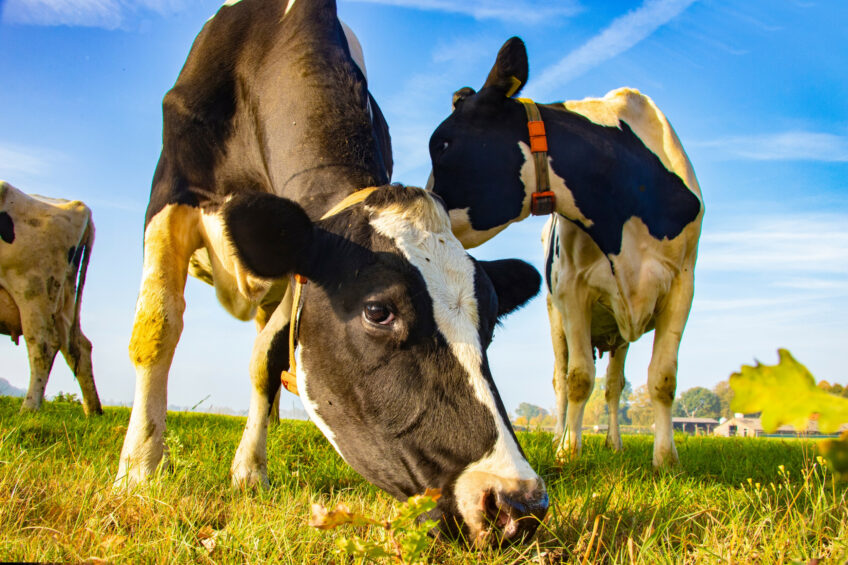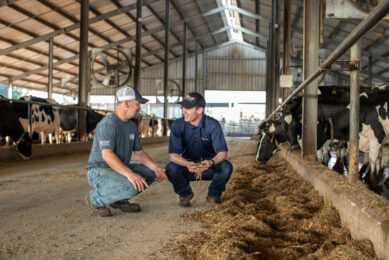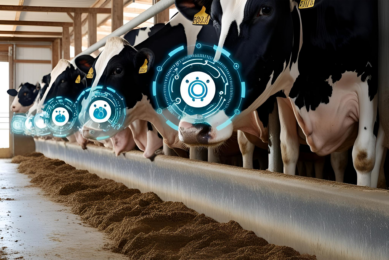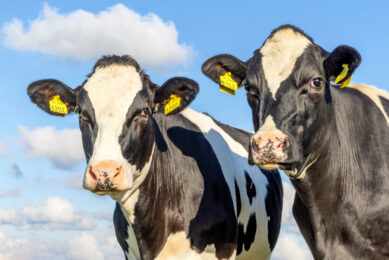Achieving a sustainable dairy industry

Implementing sustainable strategies is necessary to ensure safe, nutritious milk-based products for human consumption.
Sustainability is an integrated system of practices applied in the dairy industry over the longer-term to provide milk-based products, enhance environmental quality and natural resources, make efficient use of nonrenewable resources, and sustain the economic viability of dairy farm operations. In dairy production systems, sustainable strategies can be implemented through manure management, nutritional management, and grazing management. In addition, innovative technologies can be applied on farms to achieve sustainability goals.
Sustainable manure management
Sustainable manure management provides plants with most of their nutrient needs while balancing the production, economic and environmental concerns of manure generation, handling, processing, and end use. Current sustainable manure management systems include solid waste systems, slurry waste systems, and lagoon waste systems.
The solid waste system is used for manure with 75-80% water content, in which the liquids of manure need to be drained off by adding 12 pounds of straw per 100 pounds of fresh manure. The slurry waste system is used to handle manure containing 90-96% water with special pumps. In this system, liquid manure is spread on the soil or injected into the soil to decrease odours and nitrogen emissions. The lagoon waste system handles manure with 96-98% water content with no excessive straw or fibrous material using ordinary pumps and flushing equipment. This system decreases labour, cost, and intolerable odour problems.
Sustainable nutritional management
Ineffective use of feed nitrogen leads to the presence of nitrogen in waste and environmental pollution. Dairy cattle’s ability to use feed nitrogen is associated with feed ingredients and the composition and structure of rumen microbiota; therefore, various nutritional strategies can be implemented to reduce nitrogen emissions from dairy production systems and improve sustainability.
Supplementation of essential oils such as sunflower oil, zataria multiflora oil, clove oil, and origanum oil decreases urinary nitrogen excretion and ammonia concentrations and increases nitrogen retention. Plants including tamarind residue silage, nigella sativa seeds, Rosmarinus officinalis leaves, and garlic leaves enhance nitrogen metabolism, reduce fecal nitrogen excretion, and increase nitrogen retention. In addition, adding tannin complex proteins decreases protein degradation, increases the efficiency of microbial protein synthesis, decreases ammonia level, and enhances the flow of non-ammonia nitrogenous compounds into the gut; thus, reducing nitrogen excretion.
Furthermore, decreasing dietary protein would increase nitrogen retention, reduce nitrogen emission, enhance milk nitrogen efficiency, and lower urinary nitrogen excretion in late-lactation cows.
Feed treatment including cutting time, maturity stage of forage, and feeding mode impact nitrogen metabolism in dairy cattle. In addition, protein infusion into the abomasum instead of rumen improves the efficiency of nitrogen utilisation and excretion due to different regulation of nitrogen metabolism in various supplementation sites.
Sustainable grazing management
Continuous grazing in large paddocks leads to patch grazing, resource deterioration, a decrease in plant vigor and desirable plants in localised areas, and an increase in less desirable species and weed growth in vacated spaces. Sustainable grazing management controls grazers and grazing lands and maintains and recovers ecosystem structure and function while attaining social, cultural, and economic goals. In addition, sustainable grazing management reduces soil erosion and the amount of barnyard runoff and enhances pastures productivity.
The rotational grazing system includes interchanging periods of use and rest to uniformly space out grazing intensity across the grassland and promote vegetation growth. But, there is a concern that forage may lose digestibility and nutrient concentration as it matures during rest periods. Proper sustainable grazing management requires planned grazing to accomplish environmental goals, adequate growing season and grassland recovery to improve range condition, matching forage availability and dairy cattle numbers in wet and dry years, controlling dairy cattle distribution in grassland, and preparing a buffer area for grazing.
Technology in sustainable grazing
A variety of technologies including Global Positioning System (GPS), virtual fencing/herding system, Internet of Things and cloud storage, urine sensors, and accelerometers are available to be used for sustainable grazing management in the dairy production systems. The GSP technology monitors changes in grazing behavior, determines grazing preference of cows, and improves grazing management and paddock utilisation.
Virtual fencing/herding systems detect cow movement toward a virtual fence and control grazing and nutrient transfer events. The Internet of Things and cloud storage make farmers aware of grazing behaviour and movement of every cow. Urine sensors monitor urination events and characterise the variation in urine deposition. Then, data collected by urine sensors is used to allocate dairy cows to different environments considering the sensitivity of that environment to nitrogen overloading.
Accelerometers comprehend individual animal feed intake including number of daily feeding events, the duration of feeding events, and the rate of intake during feeding events. This data will improve grazing management through matching feed requirements with feed availability, and matching variability in grazing with pasture disappearance and soil mineral maps.
Challenges of sustainable practices
While the potential of sustainability management practices is immense, there are challenges that need to be addressed. Aligning the interests and priorities of different stakeholders and overcoming their differences requires open communication, mutual understanding, and a shared commitment to sustainability goals. Furthermore, implementing certain sustainable practices depends on the level of resources, capabilities of farmers, availability of financial resources, necessitating support through policy initiatives, funding, and knowledge transfer programmes.
Conclusion
Establishing sustainable dairy industry requires advanced manure management, nutritional management, and grazing management strategies. While there is a great potential in implementing sustainability practices, a variety of challenges must be addressed through policy initiatives, funding, and knowledge transfer programmes.
References are available upon request.
Join 13,000+ subscribers
Subscribe to our newsletter to stay updated about all the need-to-know content in the dairy sector, two times a week.










